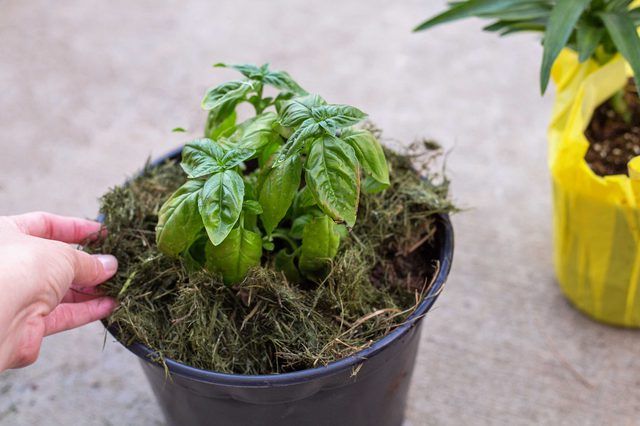Bulbs
Flower Basics
Flower Beds & Specialty Gardens
Flower Garden
Garden Furniture
Garden Gnomes
Garden Seeds
Garden Sheds
Garden Statues
Garden Tools & Supplies
Gardening Basics
Green & Organic
Groundcovers & Vines
Growing Annuals
Growing Basil
Growing Beans
Growing Berries
Growing Blueberries
Growing Cactus
Growing Corn
Growing Cotton
Growing Edibles
Growing Flowers
Growing Garlic
Growing Grapes
Growing Grass
Growing Herbs
Growing Jasmine
Growing Mint
Growing Mushrooms
Orchids
Growing Peanuts
Growing Perennials
Growing Plants
Growing Rosemary
Growing Roses
Growing Strawberries
Growing Sunflowers
Growing Thyme
Growing Tomatoes
Growing Tulips
Growing Vegetables
Herb Basics
Herb Garden
Indoor Growing
Landscaping Basics
Landscaping Patios
Landscaping Plants
Landscaping Shrubs
Landscaping Trees
Landscaping Walks & Pathways
Lawn Basics
Lawn Maintenance
Lawn Mowers
Lawn Ornaments
Lawn Planting
Lawn Tools
Outdoor Growing
Overall Landscape Planning
Pests, Weeds & Problems
Plant Basics
Rock Garden
Rose Garden
Shrubs
Soil
Specialty Gardens
Trees
Vegetable Garden
Yard Maintenance
How to Grow Sweet Basil
How to Grow Sweet Basil. Sweet basil (Ocimum basilicum) offers backyard gardeners lush foliage as well as exotic flavors for salads, pasta dishes and soups. While it can grow as a perennial in U.S. Department of Agriculture plant hardiness zones 10 and higher, it also thrives in warm weather in all zones after the last frost date. Try adding sweet...
Sweet basil (Ocimum basilicum) offers backyard gardeners lush foliage as well as exotic flavors for salads, pasta dishes and soups. While it can grow as a perennial in U.S. Department of Agriculture plant hardiness zones 10 and higher, it also thrives in warm weather in all zones after the last frost date. Try adding sweet basil to your garden's landscape -- and to your meals -- to enjoy the scent and taste of this familiar herb.
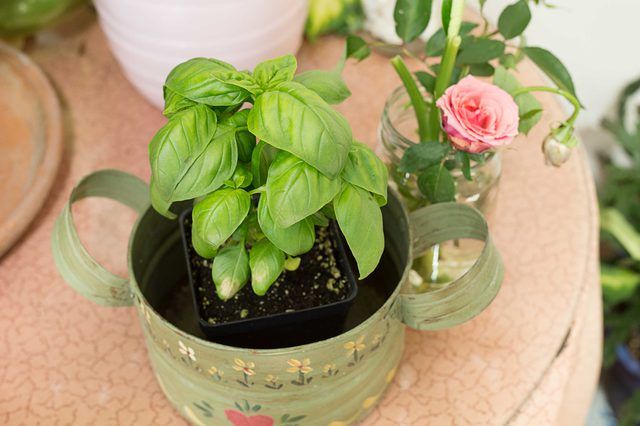
If you're growing sweet basil in the ground outdoors, wait until after the last frost date in your area. Ideally, the soil temperature should be at least 70 degrees Fahrenheit for optimal basil seed germination. If you're growing your basil in a container, you can start it indoors up to six weeks before the last frost date. Wherever you decide to grow your basil, it must receive full sun all day.
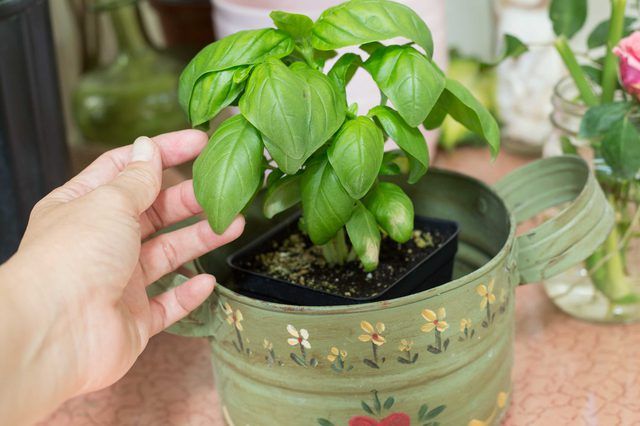
Prepare your outdoor garden bed by mixing a couple inches of well-rotted compost into the top 6 inches of soil. This enhances soil drainage and boosts the level of organic matter in the ground -- a key foundation for the biggest, healthiest sweet basil plants. If you're raising your basil in a container, use a gallon-sized pot and fill it with any well-draining potting mix, preferably a soil-less mix made with aged bark and peat moss.
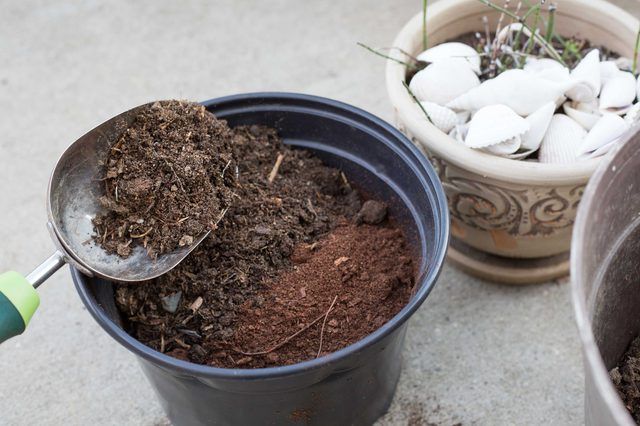
Basil seeds don't need to be buried deep. Sprinkle them on the surface of your prepared soil or bury them just 1/4 inch below the soil surface. When planting more than one sweet basil seed, space them apart by 10 to 12 inches. Mist the soil surface twice a day or as necessary to keep the top of the soil evenly moist. You'll see your seeds germinating within seven days.
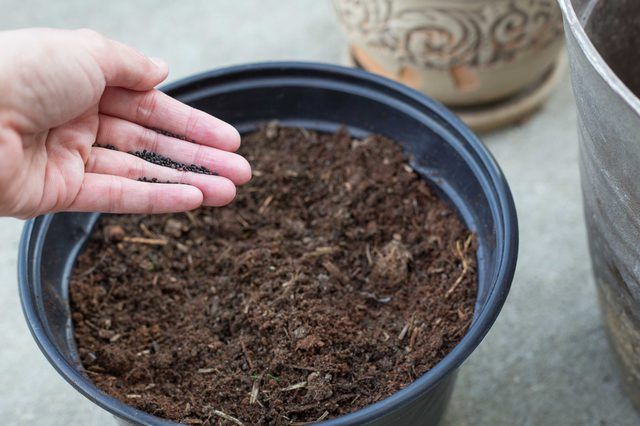
Infrequent watering improves the flavors of many types of herbs. Water your sweet basil once every seven to 10 days, using enough water to moisten the soil to a depth of 8 to 10 inches. Deep, infrequent watering encourages each basil plant to extend its root network deeper, creating a stronger and healthier plant. If you have your sweet basil in pots, you may need to water them more frequently because pots dry out faster. Watch for signs of drought stress, such as wilting or leaf curling, and increase watering frequency if necessary.
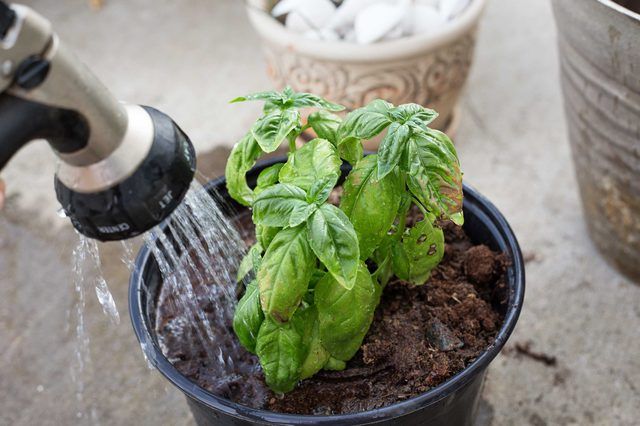
Sweet basil, like many types of herbs, requires rare, infrequent fertilization. If you choose to fertilize your basil, do so just once halfway through your growing season. Use 1 1/2 ounces of 5-10-5 fertilizer for every 5 feet of gardening row, and water your sweet basil immediately after fertilization to help carry the fertilizer down into the soil.
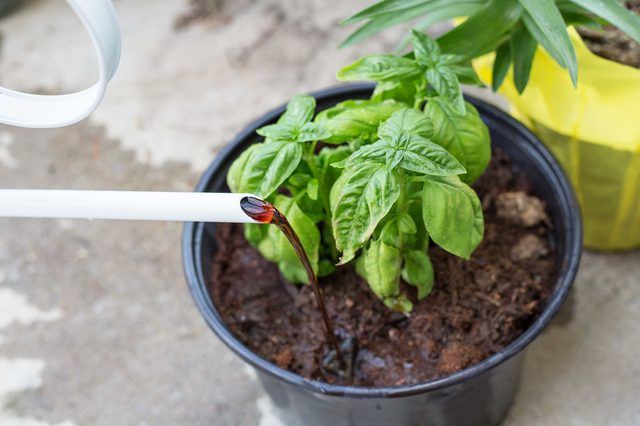
Mulch helps to improve soil moisture retention, blocks out any potential invasion of weeds and improves soil nutrient levels as it slowly decomposes. For sweet basil, apply a 2- to 3-inch-thick layer of mulch around each plant. Example mulch materials include shredded leaves and weed-free grass clippings.
